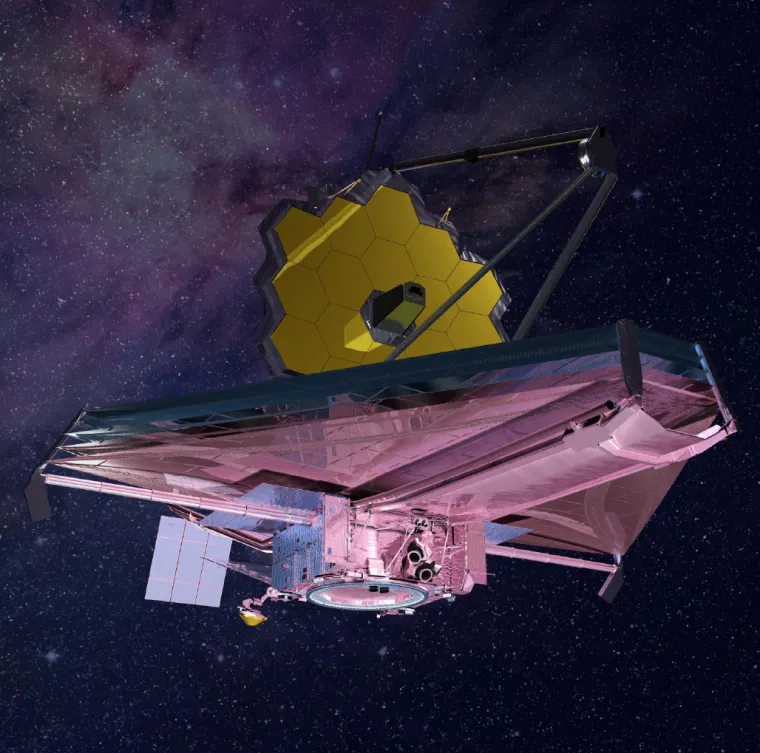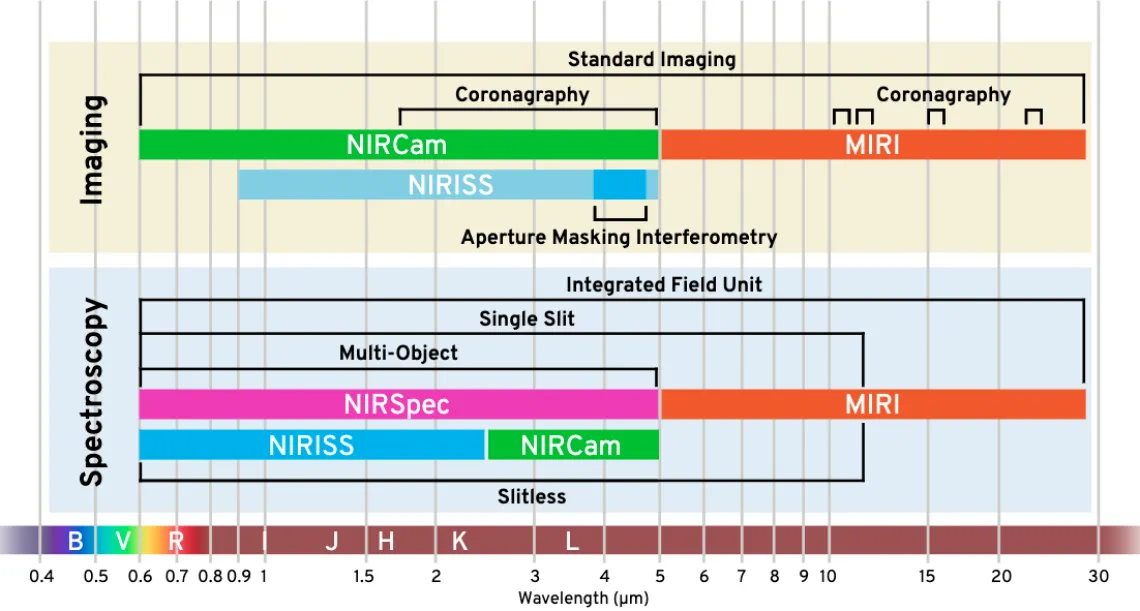James Webb Telescope Overview
The James Webb Space Telescope (sometimes called JWST or Webb) is a large infrared telescope with a 6.5-meter primary mirror. The telescope was launched on an Ariane 5 rocket from French Guiana in December 2021.
The Webb telescope will be the premier observatory of the next decade, serving thousands of astronomers worldwide. It will study every phase in the history of our universe, ranging from the first luminous glows after the Big Bang, to the formation of solar systems capable of supporting life on planets like Earth, to the evolution of our own Solar System.
Webb is an international collaboration between NASA, ESA (the European Space Agency), and the Canadian Space Agency (CSA). NASA's Goddard Space Flight Center in Greenbelt, Maryland, is managing the development effort. The main industrial partner is Northrop Grumman; the Space Telescope Science Institute will operate Webb after launch.
Several innovative technologies have been developed for Webb. These include a primary mirror made of 18 separate segments that unfold and adjust to shape after launch. The mirrors are made of ultra-lightweight beryllium. Webb's biggest feature is a tennis court sized five-layer sunshield that attenuates heat from the Sun more than a million times. The telescope’s four instruments - cameras and spectrometers - have detectors that are able to record extremely faint signals. One instrument (NIRSpec) has programmable microshutters, which enable observation of up to 100 objects simultaneously. Webb also has a cryocooler for cooling the mid-infrared detectors of another instrument (MIRI) to a very cold 7 kelvins (minus 447 Fahrenheit) so they can work.
Marcia Rieke, a UArizona Regents Professor of Astronomy, is principal investigator for the Near Infrared Camera (NIRCam), which sits at the heart of the Webb Telescope. She led the development of the instrument, which was conceived to carry out the telescope's original purpose: to discover what astronomers refer to as "first light" galaxies at the moment of their formation in the very early universe. George Rieke, also a Regents Professor of Astronomy, is science team lead for the Mid-Infrared Instrument (MIRI) built by a consortium of European scientists and engineers and NASA's Jet Propulsion Lab. MIRI was added to Webb to expand the telescope's reach even farther into the infrared spectrum and enable many additional investigations.
The combined time allocated by NASA to the two UArizona instrument teams and other UArizona astronomers accounts for 13% of the total observing time awarded, giving UArizona more time than any other astronomy center in the world.


What happens after Webb is launched?
Starting at liftoff, the Ariane rocket will provide thrust for about 26 minutes. Telemetry from Webb begins after payload fairing separation, almost 3 and a half minutes after launch. Webb will separate from the Ariane 5 launch vehicle a half hour after launch and the solar array will deploy automatically immediately afterward. We will also command the release of several systems that were locked for launch in preparation for deployments.
Two hours after launch we will deploy the high gain antenna. Twelve hours after launch there will be the first trajectory correction maneuver by small rocket engines aboard Webb itself.
The second trajectory correction maneuver will take place at 2.5 days after launch. We will start the sequence of major deployment just after that. The first deployments are the fore and aft sunshield pallets, followed by the release of remaining sub-system launch locks. The next deployment is the telescope in which the telescope and the spacecraft bus move apart from each other by about 2 meters when the deployable tower assembly extends. The full sunshield deployment with unfolding and tensioning of the membranes can then be initiated. At 6 days we deploy the secondary mirror, followed by the side wings of the primary mirror.
As the telescope cools down in the shade of the deployed sunshield, we will turn on the warm electronics and initialize the flight software. At the end of the first month, we will do the mid-course correction that ensures that Webb will achieve its final orbit around L2. Although the telescope cools to near its operating temperature, the ISIM is warmed with electric heaters to prevent condensation on the instruments as residual water trapped in the materials making up the observatory escapes to the vacuum of space.
At 33 days after launch we will turn on and operate the Fine Guidance Sensor, then NIRCam and NIRSpec. The first NIRCam image will be of a crowded star field to make sure that light gets through the telescope into the instruments. Since the primary mirror segments will not yet be aligned, the picture will still be out of focus. At 44 days after launch we will begin the process of adjusting the primary mirror segments, first identifying each mirror segment with its image of a star in the camera. We will also focus the secondary mirror.
From 60 to 90 days after launch we will align the primary mirror segments so that they can work together as a single optical surface. We will also turn on and operate the MIRI. By the end of the third month we will be able to take the first science-quality images. Also by this time, Webb will complete its journey to its L2 orbit position.
At about 85 days after launch we will have completed the optimization of the telescope image in the NIRCam. Over the next month and a half we will optimize the image for the other instruments. We will test and calibrate all of the instrument capabilities by observing representative science targets.
Webb will begin its science mission and start to conduct routine science operations.

